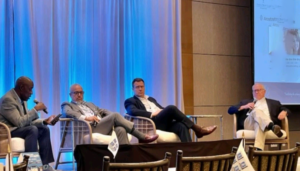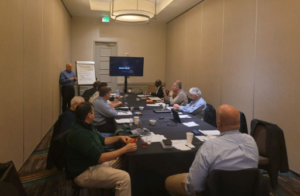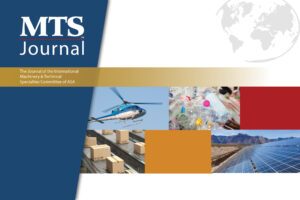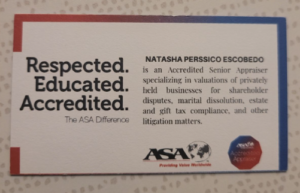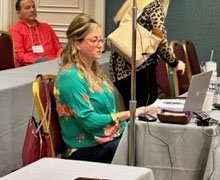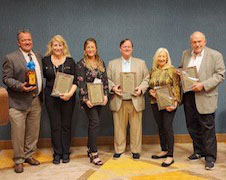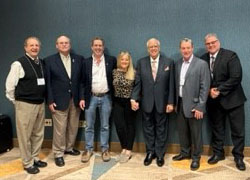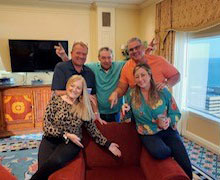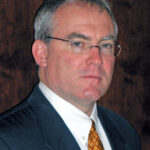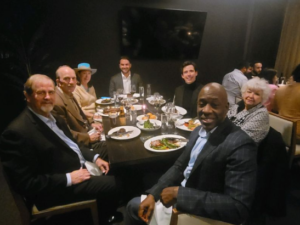IVSC Advisory Forum-Working Group Meeting Recap
By: Jack Beckwith, ASA, CEA
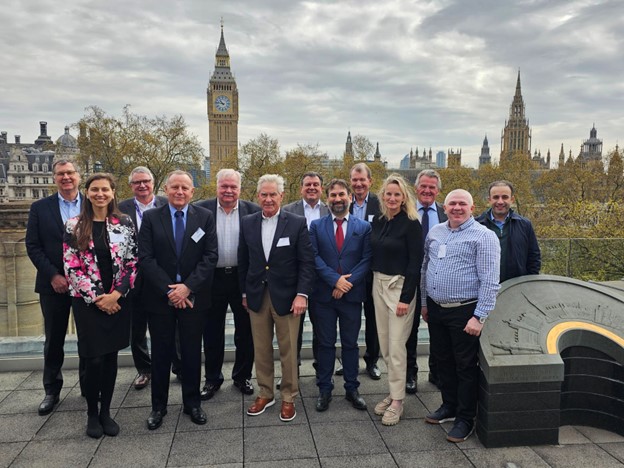
The IVSC Advisory Forum-Working Group (AFWG) just concluded their first face to face meeting since 2019 at the RICS Headquarters in London. Valuation Professional Organization Representatives attending from left to right were Gilles de Courcel from France; Aida Dedajic from The Appraisal Foundation; Ben Elder from United Kingdom; Val Chiasson from the Appraisal Institute; Dave Bunton with The Appraisal Foundation; Jack Beckwith with ASA; Reiner Lux from Germany; Leandro Escobar from Spain; John Martin, AFWG Chairman, from Australia; Karen Lusnic from Slovenia; Robert Hecek, our visiting guest from WAVO; John Clote from South Africa; and Muath Alkhalaf from Saudi Arabia.
Nick Talbot, CEO, gave opening remarks on the state of the organization. IVSC is financially in stable condition although some IVSC membership organizations did not survive the pandemic. Our members and sponsors of IVSC have grown to over 200. The IVSC has opened an Asia office. The IVSC has a three-year agreement to increase to three staff over three years. The IVSC Asia committee is focused on outreach and the IVSC is in early stages of exploring if a similar regional office can be set up in areas such as Middle East and Africa. The IVSC has several board members leaving the boards and has gained several new trustees. He added that the IVSC engagement with IOSCO continues.
Richard Stokes, Marketing and Communications, introduced the new IVS Branding campaign, while Alexander Aronsohn, Director of Technical Standards for Tangible Assets presented the “IVS Exposure Draft Apr-23” and the “IVS Exposure Draft Apr-23 Summary and Consultation Questions”. The IVS Exposure Draft Consultation is now open to our ASA Members and can be accessed via the following link: https://www.ivsc.org/consultations/ivs-exposure-draft-for-consultation-2023/
Talbot asked if each of IVSC members could comment on the standards. The greater the feedback, the better the quality of standards. There will be a vetting process through July of 2023 where there can be a basis of conclusions on how the Board discussed the feedback and can move to make a decision. Talbot emphasized the importance that the valuation profession gets recognized by leaders and regulators in the industry. There are often no requirements to become a valuator which is not in the public interest. IVSC views partnership with professional organizations and partners to be important. The IVSC has had engagement with other regulators around the world. In Singapore, the IVS is well embedded. The IVSC has engagement with tax authorities, and there is increased engagement with the UN. The IVSC has a meeting with IMF in Washington DC, which also helps with capacity building and help make recommendations for standards and professionalism around the world.
Our group discussed key points for growing the profession globally are noted below.
- Concentrated and continuous campaign to make the public aware of the benefits using qualified appraisers, for what is in most cases is the largest investment they will ever make in their lives, the purchase of a home.
- Diversification and inclusion of all who aspire to enter our fields of expertise by reconsidering and developing meaningful and inclusive paths to obtaining education, experience, and employment.
- Developing relationships with education institutions at the high school and university levels that can 1) inform students about career opportunities in the profession, and 2) coordination of entry level appraisal education to allow students a head start in obtaining required education and experience.
There was an overall agreement by our group that our VPO Members face similar challenges with an aging population and the need for global standardize training and education. Talbot was impressed with ASAs efforts to offer free membership to students, hosting in-person and virtual networking events, establishing special business valuation student club program for college students to learn more about the BV profession, and expanding ASA’s mentoring program.
John Martin led the members through a draft of a Growing Recognition of the Valuation Profession Globally paper and asked the members to discuss the following questions with their VPO:
- Do we need a more globally recognized valuation profession?
- Do VPOs want it?
- What’s in it for VPOs?
- What are the barriers to success?

Jack Beckwith, ASA CEA, serves as ASA’s representative to the IVSC. He has performed and supervised valuations throughout the United States, Canada, Mexico, and Europe, as well as published articles for various valuation topics in Equipment Finance Advisor, the M&TS Journal, and the ASA Professional. In addition, Jack has been an instructor for ASA teaching Principle of Valuation courses. Honorariums include: ASA International Conferences Presenter and ELFA Annual Conventions Presenter. He can be reached at beckwith@eagi.com

